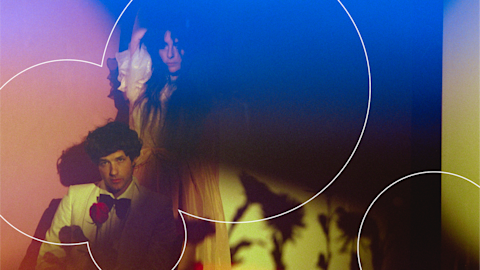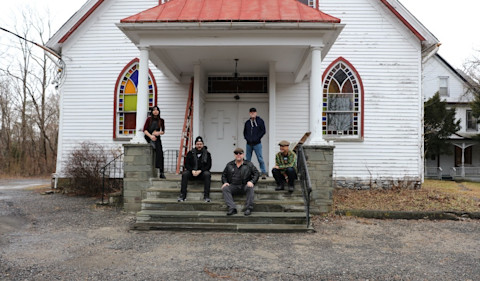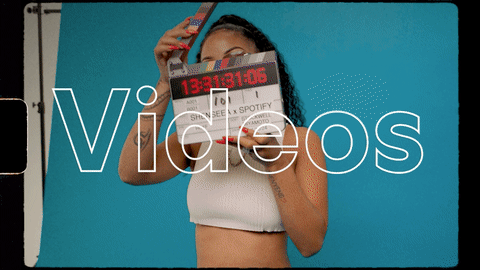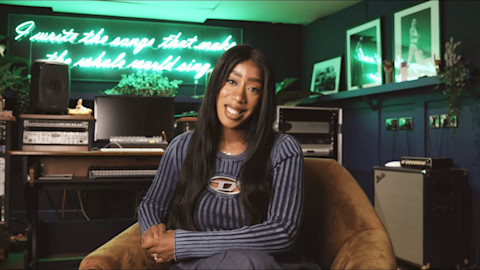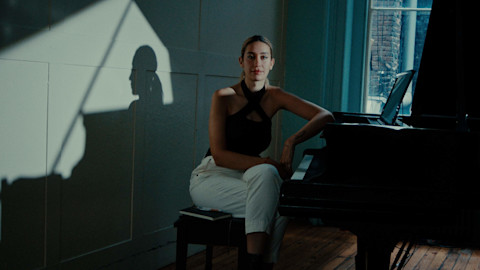Imagine the great LP covers of the last 50 years — The Velvet Underground & Nico’s iconic Warhol banana, Dark Side of the Moon’s prism — images so culturally resonant, they took on a generation-spanning life of their own. Now imagine album-cover-design in the streaming era, where spaces for presenting artwork tend to be smaller, non-physical, and surrounded by infinitely more distractions.
Can an album cover still make an impact in this era? Some would argue it can’t. Others, like art director Joe Perez, who’s designed iconic covers like Kanye West’s Yeezus and Nicki Minaj’s The Pinkprint, don’t really have time for such debates. They’re too busy defining the future of the medium.
“Every time I work on an album cover now,” explains Perez, “I’m always looking at it on my iPhone to make sure the colors pop, that everything looks good at different brightnesses. There’s some people who really don’t give a shit—who just create beautiful art for art’s sake. But if you’re a commercial artist, it’s turning into a different medium.”
Perez began dabbling in design as a teenager, and was hired in the late ‘00s by West to curate the rapper’s legendary KanyeUniverseCity blog, ground zero for his G.O.O.D. Friday singles campaign. Since then, he’s helped create some of the most striking cover art of the decade, from the cheeky gold chains of 2 Chainz’ B.O.A.T.S. II, to the stark, minimalist barcode on Pusha T’s My Name Is My Name. His landmark design for Yeezus represents one of the decade’s best.
![Cover Art for 2 Chainz’ B.O.A.T.S. II]()
Cover Art for 2 Chainz’ B.O.A.T.S. II
“Conceptually,” says Perez, “the Yeezus cover tied into the music—the whole idea of stripping everything down to the bare necessities and exposing the structure of things that we take for granted. That’s why I liked working with Kanye. He was meticulous about every art piece. It had to have a meaning and to be the highest quality, and we’d spend hours and hours on it. The G.O.O.D. Friday covers looked so simple, yet there were so many iterations that I think your mind would be blown.”
Having worked in the field since well before smartphones and streaming, Perez acknowledges that a designer’s priorities and process have had to shift drastically. “Everybody’s looking at art on a device now,” he says. “Obviously that’s having a major impact, even down to the turnaround times, because everything is sped up now. We live in a culture that’s content-hungry. It’s like as soon as you put something out, it’s old the next day.”
In designing covers for the streaming landscape, Perez gravitates toward bold, graphic compositions that take advantage of color, texture, and especially negative space. “The minimalist quality of the art was definitely a brand ethos, where we all agreed we were trying to just take away all the stuff that’s not needed,” he explains. “It was kind of like the Dieter Rams approach: trying to get to the bare bones, the heart of the narrative.”
![Cover Art for Kendrick Lamar's To Pimp A Butterfly]()
Cover Art for Kendrick Lamar's To Pimp A Butterfly
Artist Vlad Sepetov also has a predilection for getting right to the point. A designer, photographer, and creative director, he created the unforgettable covers for Kendrick Lamar’s To Pimp A Butterfly and last year’s DAMN. The latter, especially, landed with a huge social media splash: purposefully bucking the standards of “good design,” as Septetov described it at the time, the cover was as raw and direct as the album it represented.
One side effect of the DAMN. artwork’s instant buzz was the way it moved through social media; though Sepetov was more concerned with creating a compelling image that spoke for itself, the cover’s simplicity and bold typeface seemed to create a snowball effect of crowd participation.
Increasingly, the strategy for creating impactful album art in the digital landscape often has more to do with shareability than aesthetic sensibility (though the two priorities can certainly go hand-in-hand). With its stark, scrawled hand-lettering in clean black-on-white, the cover for Drake’s 2014 mixtape, If You’re Reading This It’s Too Late, was simple but invited listeners to respond with their own riffs on the text; websites emerged that allowed anyone to generate and share their own versions, essentially turning the cover into a meme. Similarly, Young Thug’s cover for Jeffrey, on which the boundary-pushing MC struck a mysterious and meme-worthy pose in a genderless Alessandro Trincone garment, also went viral.
![Cover Art for The 1975's I like it when you sleep, for you are so beautiful yet so unaware of it]()
Cover Art for The 1975's I like it when you sleep, for you are so beautiful yet so unaware of it
The crowded spaces of the streaming landscape tend not to lend themselves to the dense detail possible on a 12” by 12” vinyl sleeve; instead, color, font, and negative space do a lot of the heavy lifting. Designer Samuel Burgess-Johnson and photographer David Drake’s bright, minimalist work for ambitious UK pop group The 1975 use neon installations to create not just visually arresting images but a cohesive brand identity; Nick Gazin’s bold, cartoonish illustrations of two monstrous hands on the covers of Run the Jewels’ albums have assumed a similar role, functioning as an instantly recognizable symbol for the duo. Perez’ personal choice for the most iconic artwork of the digital era, his own work aside, is Jesse Kanda’s striking, surreal portrait of FKA twigs for her LP1 cover: “I can’t imagine listening to that music without seeing that cover,” he says.
When Beyoncé’s game-changing self-titled album arrived in 2013 with just pink text on a black background, the design’s simplicity perfectly contrasted the richness of the videos that accompanied each song. The text wasn’t just a component of the cover’s design—it was the design. And it’s proved highly influential. “It’s gotten really easy to just plop your single title on a pink background and call it your single art,” Sepetov says, of the minimalist fervor Beyoncé inspired.
But in Sepetov’s work within the streaming landscape, he’s found that artwork is less and less reliant on text to convey a message. Often, one strong image is enough. “If you go through covers from the ‘70s and ‘80s, when vinyl was a really big deal, the artists’ names are so big—because you had to make people read it,” he explains. “But more often than not, I feel you can now avoid putting the name on the digital cover. 21 Savage’s Savage Mode is a great example. It’s a really stark cover that didn’t have his name on it. Because it’s going to say ‘21 Savage’ a hundred times elsewhere on the Spotify page. Often times, you go to New Music Friday, and with a lot of digital singles, the labels put the name of the artist so big. You don’t really need to do that.”
Though Perez admits he’s often discouraged by the shrinking turnaround times, budgets, and attention spans of this particular era, he remains optimistic about the future of album art. “I’m hoping it’s gonna evolve into something more interactive, an installation,” he says. “Say you had a Cruel Summer 2, and it’s got a pyramid on the cover, and you could fly into it with VR and explore this world. Then it would have two different lives you could experience—a flat art cover, and then something you can go inside and explore. I have all these ideas, and I’m waiting for the technology to get there.”
-Meaghan Garvey
